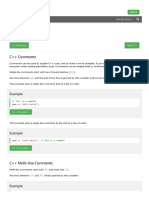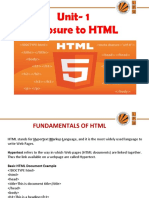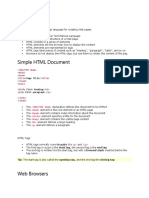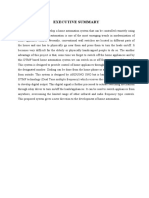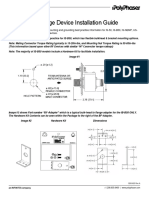0% found this document useful (0 votes)
16 views8 pagesHTML Comments
The document explains HTML comments, which are non-executable lines of code used for notes and explanations in HTML documents. It covers the rules for valid comments, including the prohibition of nesting and specific formatting requirements, as well as examples of valid and invalid comments. Additionally, it discusses multiline comments, conditional comments for Internet Explorer, and commenting styles for JavaScript and CSS.
Uploaded by
Silver LilyCopyright
© © All Rights Reserved
We take content rights seriously. If you suspect this is your content, claim it here.
Available Formats
Download as PDF, TXT or read online on Scribd
0% found this document useful (0 votes)
16 views8 pagesHTML Comments
The document explains HTML comments, which are non-executable lines of code used for notes and explanations in HTML documents. It covers the rules for valid comments, including the prohibition of nesting and specific formatting requirements, as well as examples of valid and invalid comments. Additionally, it discusses multiline comments, conditional comments for Internet Explorer, and commenting styles for JavaScript and CSS.
Uploaded by
Silver LilyCopyright
© © All Rights Reserved
We take content rights seriously. If you suspect this is your content, claim it here.
Available Formats
Download as PDF, TXT or read online on Scribd
/ 8






